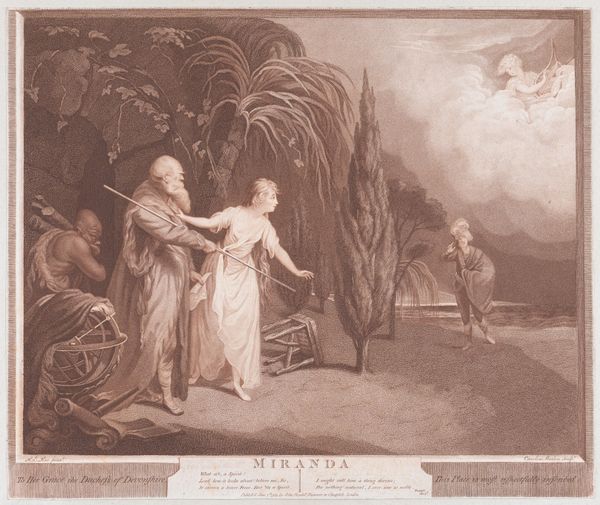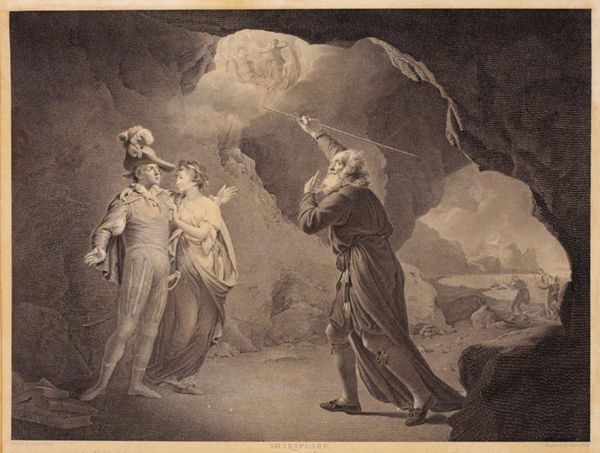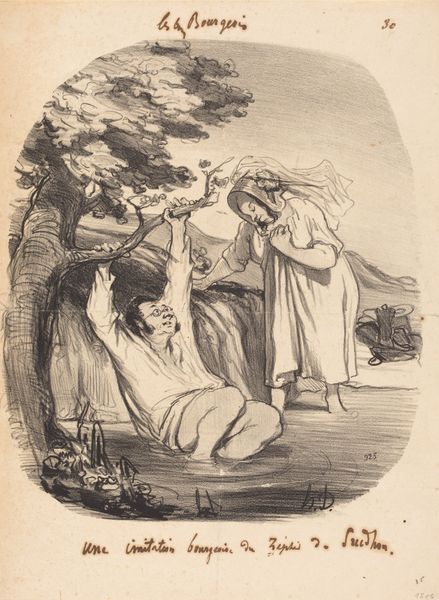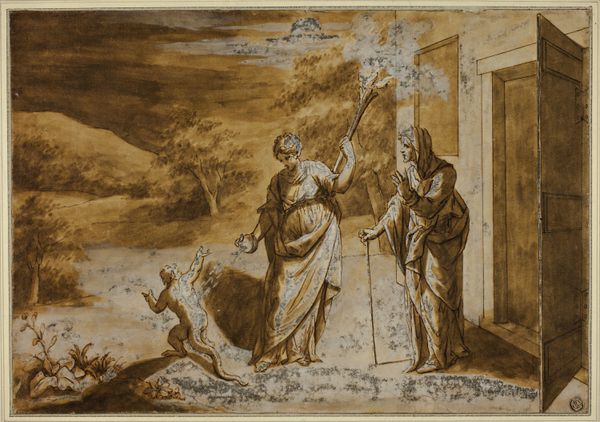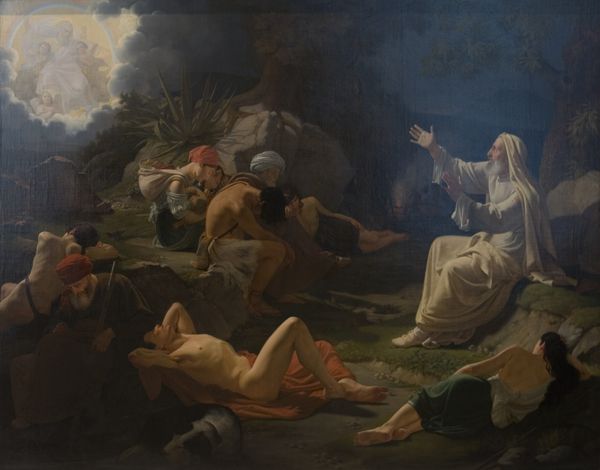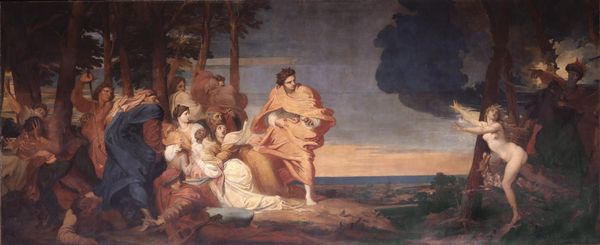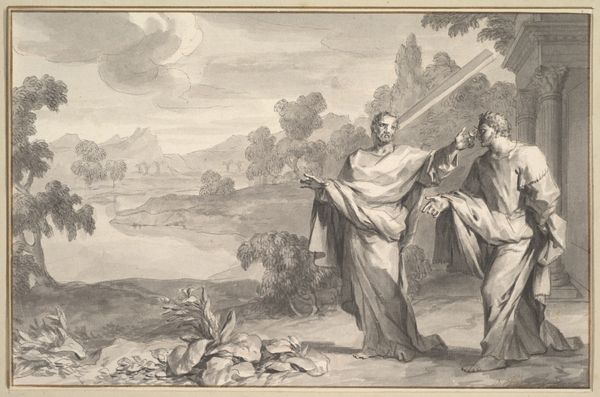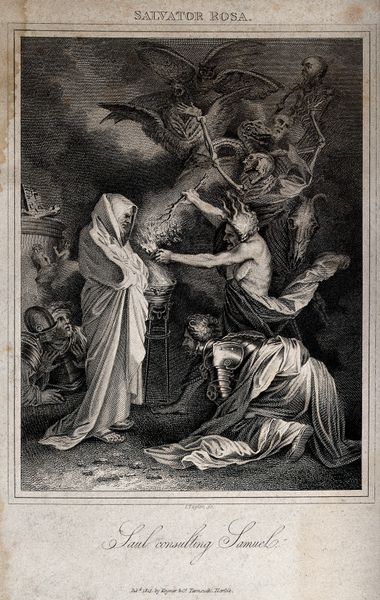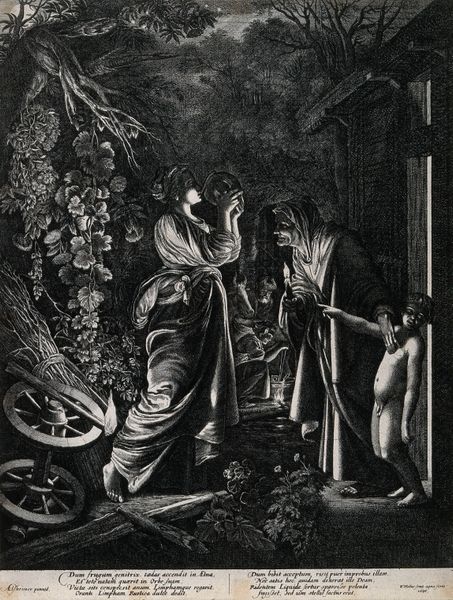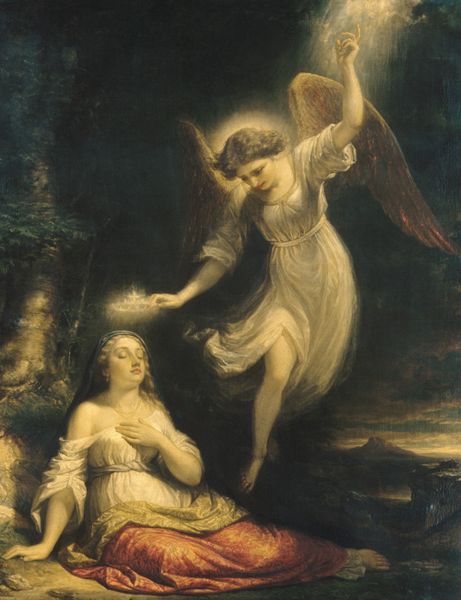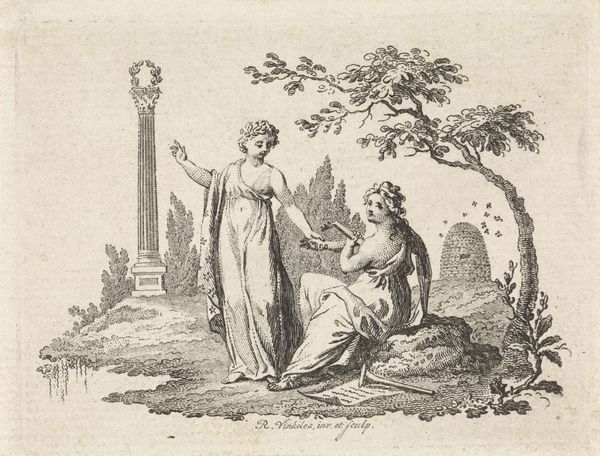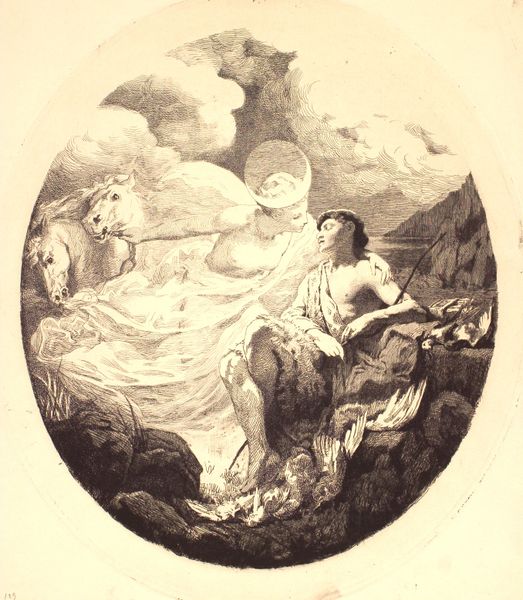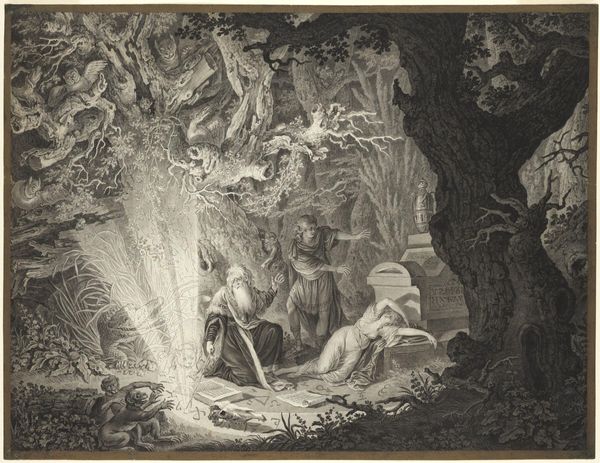
painting, oil-paint
#
gouache
#
narrative-art
#
painting
#
oil-paint
#
landscape
#
figuration
#
oil painting
#
romanticism
#
history-painting
#
watercolor
Copyright: Public domain
Editor: This is "View from the Tempest" painted by Edward Hicks around 1825, using oil paint and possibly gouache. It’s… strangely staged, almost like a theater set. What do you see in this piece that maybe I'm missing? Curator: What strikes me immediately is how the piece engages with ideas around class and labor through its very construction. Consider Hicks himself – a Quaker minister *and* sign painter. He straddled different worlds. This painting, supposedly depicting Shakespeare’s play, is not merely illustrative. It uses the material reality of paint to talk about societal structures. Editor: Can you expand on that idea? The "material reality?" Curator: Absolutely. Think about the figures' clothes – the laborious process to make those textiles, the social status each fabric implies. Notice, too, how the landscape isn't some idealized wilderness, but rather a consciously cultivated garden space, demonstrating human control over nature. Ask yourself: Who maintains such a space? Who benefits from it? Editor: So you are seeing a critical commentary woven into the making and the image itself. Curator: Precisely. Even the medium – oil paint – was becoming more accessible at the time. It allowed for a wider segment of artists, or artisans if you prefer, to produce works, challenging the traditional art hierarchies. How do you think Hicks' profession influenced how he depicted this scene, knowing that it would likely hang in a Quaker home? Editor: That's fascinating; I hadn’t considered the material production aspects and how the social position of the maker informed it all. Curator: Indeed, it transforms our reading of the piece. We are less concerned with grand Romantic expression, and more engaged in recognizing the relationship between production and societal value. Editor: This has really expanded my understanding. Thanks so much. Curator: My pleasure. Looking closely at the physical and social processes by which art comes into being reveals a new level of historical context, and that always enhances my appreciation.
Comments
No comments
Be the first to comment and join the conversation on the ultimate creative platform.
